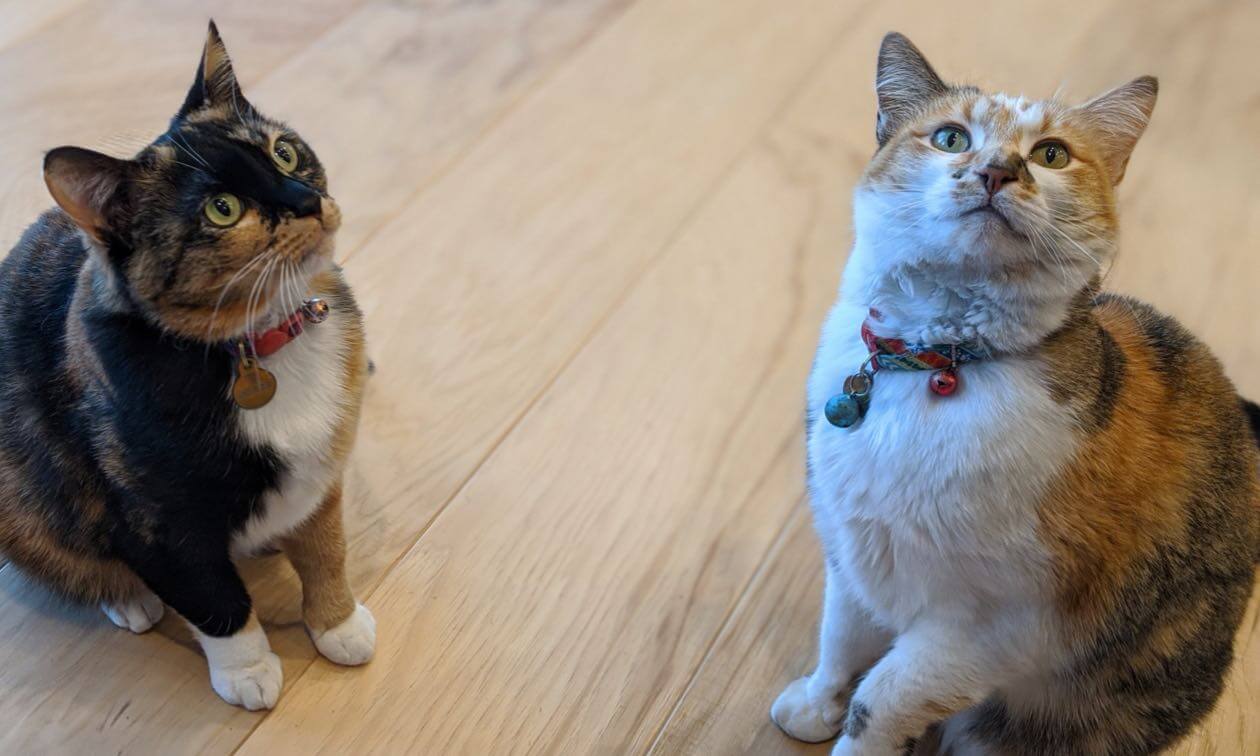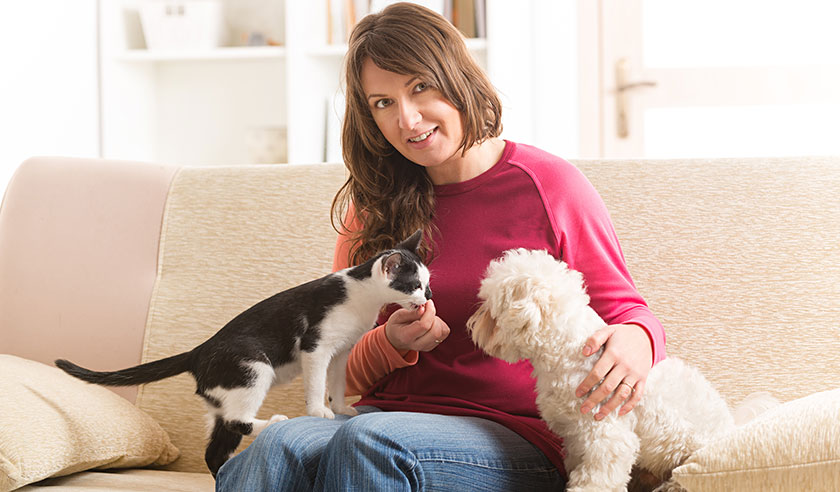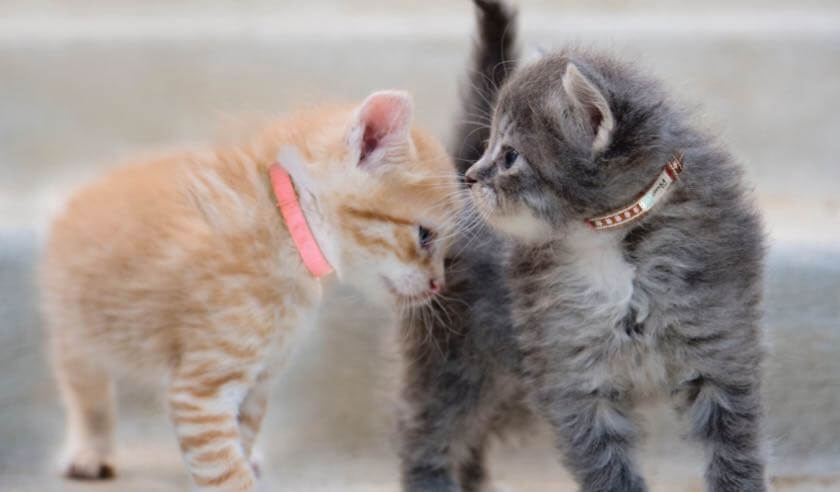Some cats can be the best of friends, but due to their territorial ways, initial introductions can be a bit tricky. The added stress for the new cat entering a new environment (and anxiety for the resident cat(s) over the change in the household) can be a recipe for problems. However, with thoughtful planning and a big dose of patience, you can provide an ideal introduction and set your feline family up for success.
The Introduction Process for Cats
You can make the transition easier for new cats by using gradual introductions and positive reinforcement.
The most important part of any introduction is to let the cats tell you when they're ready to move from one step to the next. You never want to move forward if the cats show signs of stress or discomfort. Even a little anxiety means your cats need you to slow down.
Create Separate Spaces for The Cats
The new cat should be kept separate from the other cat(s) in an area with all their resources — food and water, toys, a blanket, a litter box, hiding spots, and anything else they might need. A plug-in facial pheromone diffuser in the new cat's room and other areas in the home can help lower stress.
Your new cat's space should be neutral. If possible, avoid choosing an area your resident cats loved and spent a lot of time in.
When first arriving home, immediately take the new cat to their room. Leave them in the carrier with the door open, allowing them to come out on their own when they're ready. Give them at least a week to adjust to their area, free from other animals.
Scent Exchange
The first "introduction" should be done via scent. The cats are still separated and won't see each other during this step.
Take items heavy with each cat's scent (like blankets or towels they've slept on) and place them in the other cat's area. By doing this, the resident cat is exposed to the new cat's blanket and vice versa. This will help them get used to each other's scent. Leaving treats or kibble on the scented items will help build positive associations between the cats. Each time they smell the other cat's scent, they get something good. Repeat the scent exchange daily.
You're looking for the cats to smell the other scent without reaction and be willing to eat the treats. If they're hesitant to approach the scented item, draw their head back when smelling it, turn their ears to the side, or look generally uncomfortable, stick with this step for a bit longer. Once the cats completely tolerate each other's scent proceed to space swapping.
Space Swapping
Your new cat will need to get comfortable in the rest of the home as you go through the remainder of the introduction process.
The cats still aren't seeing each other in this step. Put your resident cat(s) in a separate room. Then open the door and allow your new cat to come out and explore if and when they're ready. When it's time for your new cat to return to their room, let your resident cat back out. Continue this swapping throughout the remaining steps.
When your new cat feels safe exploring and isn't obsessed with things that smell like your resident cat, and your resident cat isn't obsessed with smelling any spots where your new cat was hanging out, proceed to the next step.
Visual Introductions
Visual introductions mean the cats can see one another but cannot come into physical contact. This is an important step in acclimating the cats without the threat of injury. It's also an opportunity to create positive associations.
Do this by physically separating the cats with a screen door, stacked baby gates, or a garden lattice (anything they can see through but can't physically get through). Or, if both the new cat and resident cat are comfortable in a carrier, put each one in a carrier and place the carriers at a distance where the cats are relaxed. With time, the carriers can be brought closer together.
Start with the cats far enough apart that they are completely calm. Use treats, mild interactive play with a wand toy, lots of attention, or whatever your cats love to make this a positive experience. You're showing them that good things happen when they see each other and you're giving them something to focus on besides the other cat. You can even feed the cats their meals during these sessions.
Start with short sessions throughout the day, 5-10 minutes long, a few times daily. If your cats aren't comfortable with 5 minutes, don't force it. Start with just one minute if that's what they need. Over time, you can slowly move the cats closer together and increase the length of the sessions, only when they're comfortable and ready!
You will know they're comfortable with one another when they start sniffing noses, playing through the barrier, and/or rubbing against it. Even calm behavior where they stay focused on their separate activities is a win. Not all cats want to get close or interact with each other, and that's ok. You just want to make sure they're relaxed and feel safe before moving forward.
If your cats show even slight signs of discomfort or stress, put some distance between them, shorten the length of the sessions, or go back to the scent exchange for a bit longer and then try visual introductions again.
Physical Introductions
When the cats are completely comfortable with visual sessions, it is time to do a proper greeting, allowing the cats to physically interact. This will take vigilant supervision and the cats should stay separated for now when they can't be supervised.
Remove whatever barrier you used for the visual introductions so the cats can investigate one another. Allow them to proceed at their own pace.
Keep the good times rolling during this step. Continue to give delicious treats, mild interactive play, and oodles of attention during this time. Just like the visual introductions, start with short sessions throughout the day. If all goes well, gradually extend the length of each session, but continue strictly supervising the cats during this time.
If meeting face-to-face is too much for one of your cats, start with just opening the barrier a few inches for a few minutes and gradually increase the amount the barrier is open and for how long. Over time, you'll be able to move on, letting the cats share space, as explained above.
If the cats begin staring intently at each other, distract them by tossing a toy away, gently setting something solid between them (like a piece of cardboard) to break the stare, or making a loud noise like clapping your hands. If that doesn't help, revert to the previous step of visual introductions for a bit longer.
Throughout these interactions, if either cat shows any signs of stress, end the session right away on a positive note. You want to avoid a negative interaction if possible. If both cats are getting along and relaxed, you can gradually provide less and less supervision and increase the length of the sessions.
The length of the entire introduction process varies. Some cats may only take a couple of weeks, while others take months. Introductions can even last a year or more. For the best chance of success, never push past the cat's comfort zone, take a step back if they show any signs of discomfort, watch body language closely, and be patient. If you run into problems, seek the help of your veterinarian, a certified feline training and behavior consultant, or veterinary behaviorist.
ZPC-02499





